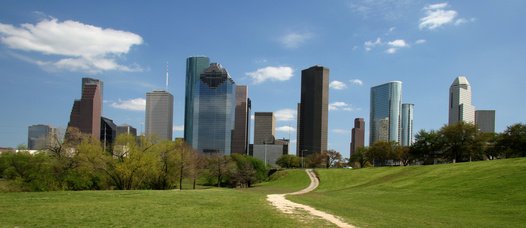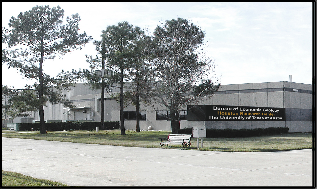Houston 2010



Sponsored by PTTC Texas/SE New Mexico Region
Program
| Day 1: Friday, July 23 | ||
|---|---|---|
| 9:00-10:30 | Introduction (Sergey Fomel) | |
|
The Madagascar project has been in public existence for four years. Madagascar provides a complete environment for organizing one's research, from new software development to running computational experiments to publishing the experimental results in papers and reports, archiving them for future usage, and sharing them with colleagues and sponsors. The introductory presentation will describe the history of the project, the Madagascar components and design principles, and the future development goals. | ||
| 10:30-10:45 | break | |
| 10:45-12:15 | Workflows in SCons and automatic testing (Jim Jennings) | |
|
The rich and well-documented Python syntax used in SConstruct files provides great flexibility when coding Madagascar SCons workflows. In the first part of this module a few geostatistical workflows will be presented to illustrate some useful techniques. Two important components of the Madagascar design goals are reproducibility and regression testing. In the second part of this module our progress towards these goals will be discussed and some of the built-in tools for automatic testing will be presented. | ||
| 12:15-1:15 | Lunch | |
| 1:15-2:45 | Seismic finite-difference modeling and migration example (Paul Sava) | |
|
The theoretical part of this module provides an overview of reverse-time imaging methodology applied to wavefield seismic data. The main technique discussed is reverse-time migration with emphasis on modern imaging conditions which enable migration velocity analysis and amplitude-versus-angle analysis. The applied part demonstrates this technique on a complex geologic model using Madagascar codes in a fully reproducible setup. | ||
| 2:45-3:00 | break | |
| 3:00-4:30 | Discussion | |
|
Open Q&A session and discussions on the future development of Madagascar | ||
| 5:30-8:00 | Dinner and Madagascar 1.0 celebration | |
| Day 2: Saturday, July 24 | ||
|---|---|---|
| 9:00-9:30 | Learning Madagascar (Tariq Alkhalifah) | |
|
Why Madagascar was easy for me? The art of the Madagascar template! In a year, I managed to write 7-8 papers using Madagascar, and the papers are still coming. Considering that I have used SU (Seismic Unix) all my life and taking into account my not-so-young age, I think Madagascar was good to me. In the presentation, I will share my experience (no Python background knowledge is needed!) and share some insights on how to use Madagascar efficiently. | ||
| 9:30-10:30 | Programming with Madagascar (Jeff Godwin) | |
| 10:30-10:45 | break | |
| 10:45-11:15 | Vplot graphics language - past, present, and future (Joe Dellinger) | |
|
| ||
| 11:15-12:15 | Plotting and high-performance computing with Madagascar (Vladimir Bashkardin) | |
| 12:15-1:15 | Lunch | |
| 1:15-2:45 | Seismic field data processing example (Ioan Vlad) | |
| 2:45-3:00 | break | |
| 3:00-4:30 | Discussion | |
|
Open Q&A session and discussions on the future development of Madagascar | ||
Location

The University of Texas at Austin
Bureau of Economic Geology
Houston Research Center
Address
- 11611 West Little York Rd
- Houston, Texas 77041, USA
- Driving directions
Registration
Register by filling the Registration Form.
The registration cost is $300 and includes morning refreshments, lunch, Friday dinner, and instructor handouts.
The registration is free for graduate students. If you are a graduate student, please e-mail pttc@beg.utexas.edu to obtain a discount code.
Speaker biographies
- Tariq Alkhalifah is currently a Professor of Geophysics at KAUST in Saudi Arabia. He graduated with a PhD from Colorado School of Mines, Golden, Colorado, in 1996, and served afterwards as a Post Doc at Stanford University for 2 years sharing an office with Sergey Fomel. I used to be a devote SU Unix follower for most of my research carrier even as a Post Doc at Stanford (SEPlib people), but I have recently seen the light and converted to Madagascar. https://sites.google.com/a/kaust.edu.sa/tariq/
- Vladimir Bashkardin is currently a PhD student in geophysics at The University of Texas at Austin. Before joining the research group of Dr. Sergey Fomel at UT Austin, he worked as a software engineer for Paradigm (former Paradigm Geophysical) with specialization in seismic data visualization and interpretation. He also was a part-time lecturer at Gubkin Oil and Gas University (Moscow, Russia), an industry-oriented school from which he holds a degree in exploration geophysics.
- Joe Dellinger graduated with a PhD in Geophysics from the Stanford Exploration Project in 1991 and currently works for BP in Houston, specializing in anisotropy and multicomponent seismology. Joe has often provided advice to the SEG (much of it unsolicited) on how they should best advance into the brave new online/digital world, for which he was awarded Life Membership in 2001. Joe currently is the editor of the Software and Algorithms section of GEOPHYSICS, and maintains the accompanying software and data website. http://software.seg.org
- Sergey Fomel has been working at the Bureau of Economic Geology at the University of Texas at Austin since 2002 and currently has an Associate Professor appointment, jointly with the Department of Geological Sciences. He received a Ph.D. in Geophysics from Stanford University in 2001 and worked previously at the Institute of Geophysics in Novosibirsk, Russia, and the Lawrence Berkeley National Laboratory. Sergey started work on Madagascar (at that time named RSF for Regularly Sampled Format) in 2003. http://www.beg.utexas.edu/fomel/
- Jeff Godwin
- Jim Jennings currently works for Shell International Exploration and Production in Houston Texas as a company consultant on carbonate reservoir modeling, but he contributes to Madagascar as a hobby and will be participating in the workshop on his own time. Before joining Shell in 2007 he worked for 23 years at the Bureau of Economic Geology, Arco, and BP. Jim has a PhD in Petroleum Engineering from Texas A&M University (1983), was chairman for an SPE reprint volume on Advances in Reservoir Characterization (2006), and was a Distinguished Lecturer for the AAPG (2008-2009). http://www.aapg.org/education/dist_lect/jennings.cfm
- Paul Sava is an Assistant Professor of Geophysics and a member of the Center for Wave Phenomena at Colorado School of Mines. He holds an Engineering degree in Geophysics (1995) from the University of Bucharest, an M.Sc. (1998) and a Ph.D. (2004) in Geophysics from Stanford University where he was a member of the Stanford Exploration Project. His research interests are in wavefield seismic imaging, stochastic imaging and inversion, computational methods for wave propagation, numeric optimization and high performance computing. http://newton.mines.edu/paul/home.php
- Ioan "Nick" Vlad received an Engineer degree in Geophysics (2000) from University of Bucharest and a M.Sc. degree in Geophysics (2002) from Stanford University. After three more years of research at Stanford and an internship with ConocoPhillips, he joined Statoil and started working at the Trondheim Research Center in 2005 on imaging and velocity analysis problems. He is a Visiting Scholar at CWP for the year of 2010, working with Prof. Paul Sava on Wave-Equation MVA. He is a member of SEG and EAGE and a participant in the Madagascar open-source project.